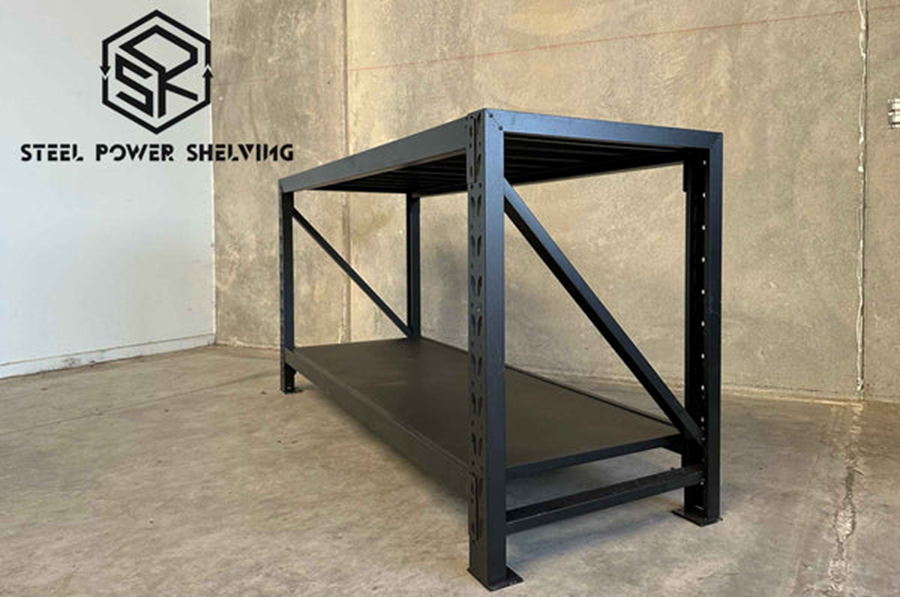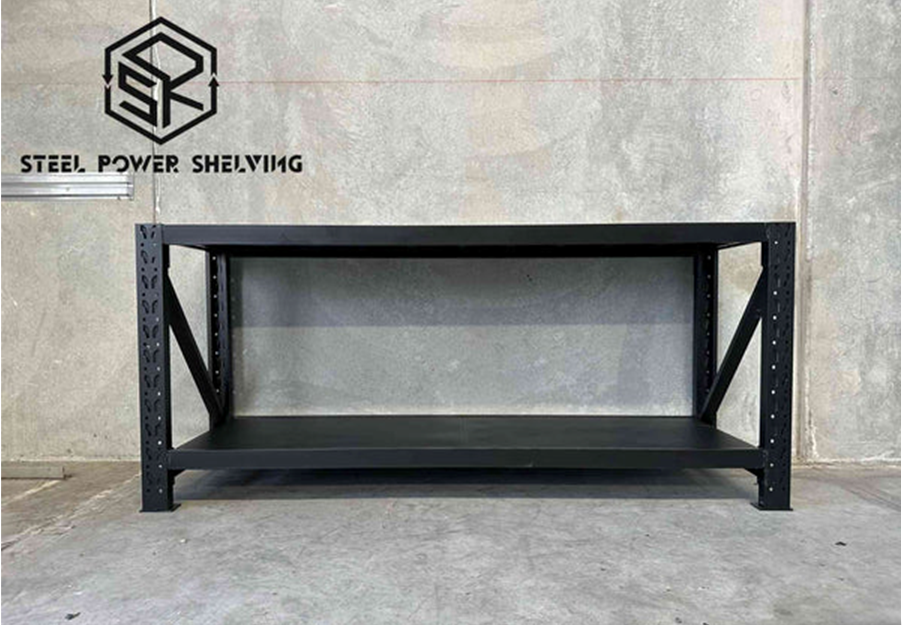Organizing your space effectively with steel power shelving is a smart and efficient way to optimize your storage solutions. Steel power shelving units offer a durable and versatile option for various environments, from homes and offices to warehouses and garages. These units are designed to withstand heavy loads and provide stability, making them ideal for storing a wide range of items.
One key advantage of steel power shelving is its durability. Steel is a robust and long-lasting material that can endure the test of time, ensuring your shelving units stay functional for years to come. This durability is especially crucial in environments where constant use and heavy objects are involved. Additionally, steel shelving is resistant to rust and corrosion, which further extends its lifespan.
Furthermore, steel power shelving is versatile, allowing for customization and adaptability to different storage needs. With adjustable shelves, you can arrange and reconfigure the shelving units to accommodate various items, from large and bulky to smaller and more delicate objects. This versatility makes steel power shelving suitable for a wide range of applications, from storing household items and office supplies to managing industrial tools and equipment.

Benefits of Steel Power Shelving
The benefits of steel power shelving are multifaceted and make them a popular choice for various storage needs. First and foremost, steel power shelving units are renowned for their exceptional durability. Constructed from high-quality steel, they can withstand substantial weight and wear and tear, making them ideal for demanding environments such as warehouses, garages, and industrial facilities. Their resistance to rust and corrosion further enhances their longevity, ensuring they remain functional and attractive for years to come.
Another advantage of steel power shelving is their versatility. With adjustable shelves, they can be customized to accommodate items of varying sizes, shapes, and weights. This adaptability allows you to maximize your storage space efficiently, whether you’re organizing tools, equipment, household goods, or office supplies. Furthermore, the modular design of steel power shelving makes it easy to expand or reconfigure your storage setup as your needs change, offering flexibility that other shelving options may not provide.
Steel power shelving also offers enhanced safety and stability. The inherent strength of steel ensures that these units can support heavy loads without sagging or buckling, reducing the risk of accidents. Additionally, many steel power shelving units are designed with safety features such as locking mechanisms, ensuring that your stored items remain secure.
Choosing the Right Steel Power Shelving
Selecting the right steel power shelving is a critical decision to make, as it significantly impacts the efficiency and organization of your storage space. The first step in choosing the right steel power shelving is to assess your specific needs. Consider factors such as the size of your space, the types of items you need to store, and the weight capacity required. This initial evaluation will help you determine the size and configuration of the shelving units that will best suit your needs.
Another important consideration is the quality and material of the steel shelving. Look for units made from high-quality steel that is durable and resistant to corrosion. Gauge thickness is a crucial factor, with lower gauge numbers indicating thicker, more robust steel. Thicker steel is preferable for heavy-duty applications. Additionally, examine the shelving’s weight capacity and choose units that can safely accommodate your heaviest items.
Adjustability is another key feature to consider. Select steel power shelving with adjustable shelves to allow for flexibility in organizing various items. The ability to reconfigure the shelving to accommodate changing storage requirements is a valuable advantage.
Safety features, such as locking mechanisms and stabilizing feet, are also worth assessing, especially in environments where the shelving will be subject to movement or where security is a concern.

Installation and Assembly
Installation and assembly are crucial steps when setting up various products and systems, and the process can vary widely depending on the complexity of the item or structure in question. Proper installation and assembly are essential for ensuring safety, functionality, and longevity. These steps involve following manufacturer guidelines, which typically include reading instruction manuals and using appropriate tools. For some products, installation may require professional assistance to guarantee compliance with safety standards and local regulations. The level of complexity in installation and assembly can range from simple, do-it-yourself tasks, such as assembling furniture or installing home appliances, to more intricate projects like constructing modular buildings or setting up industrial machinery. In some cases, specialized knowledge and skills, such as electrical or plumbing expertise, may be required. Regardless of the complexity, meticulous attention to detail and precision are key to a successful installation or assembly, ensuring that the final product or structure operates as intended and meets safety standards. Proper installation and assembly also extend the item’s lifespan and reduce the likelihood of future maintenance issues. It’s essential to prioritize safety, accuracy, and adherence to manufacturer guidelines to achieve the desired results in any installation or assembly project.
Organizing Tips with Steel Power Shelving
Organizing with steel power shelving can revolutionize your storage space by maximizing efficiency, accessibility, and overall tidiness. To make the most of these sturdy and versatile shelving units, consider the following organizing tips.
First, categorization is key. Before placing items on your steel power shelves, sort and categorize them. This will help you determine the best arrangement and ensure that similar items are stored together. It also simplifies retrieval and reduces clutter.
Secondly, prioritize accessibility. Place frequently used items on lower or eye-level shelves for easy access, while reserving higher shelves for items you don’t need as often. Consider adjustable shelving options to tailor the heights to your needs, which enhances accessibility further.
Third, labeling is a simple yet effective technique. Utilize labels or clear storage bins to easily identify the contents of each shelf. This quick reference can save time and prevent clutter from accumulating due to rummaging.
Additionally, maximize vertical space. Steel power shelving units often allow you to adjust shelf heights, so capitalize on this feature to create additional levels and accommodate various item sizes.
Lastly, keep safety in mind. Ensure that heavy or delicate items are securely stored, using safety features provided by your steel shelving, such as locking mechanisms or wall anchoring for stability.

Maintenance and Care
Maintenance and care are integral aspects of ensuring the longevity, performance, and safety of various products and systems. Whether you’re dealing with household appliances, vehicles, industrial machinery, or any other equipment, regular maintenance is essential. This typically involves a series of scheduled tasks, such as cleaning, inspecting, lubricating, and replacing worn components. By following manufacturer guidelines and adhering to recommended maintenance schedules, you can prevent unexpected breakdowns and costly repairs. In addition to scheduled maintenance, proper care during everyday use is equally important. This may include cleaning and storing items correctly, monitoring for unusual sounds or behaviors, and promptly addressing any issues that arise. Maintenance and care not only extend the life of your possessions and equipment but also contribute to safety. Neglecting regular maintenance can lead to dangerous malfunctions, especially in the case of vehicles, industrial machinery, or home appliances. Moreover, it can also have environmental consequences if, for instance, leaks or malfunctions release harmful substances. In summary, maintenance and care are fundamental practices that promote the reliability, safety, and longevity of various products and systems. Adhering to these practices can save time, money, and potential hazards in the long run.
Safety Considerations
Safety considerations are paramount when it comes to various aspects of life, whether in everyday activities, the workplace, or specific situations. Prioritizing safety involves a proactive and thoughtful approach to mitigate risks and prevent accidents. In everyday life, safety considerations encompass various aspects, such as personal safety, traffic safety, and home safety. This includes wearing seat belts, following traffic rules, and securing your home against potential hazards. In the workplace, safety considerations become even more critical. Employers are responsible for providing a safe working environment, which may include training employees on proper safety procedures, maintaining equipment, and ensuring the use of personal protective gear when necessary.
In specific situations, like construction sites or industrial facilities, safety considerations are highly regulated to protect workers and the public. This may involve adherence to strict protocols, safety inspections, and emergency response plans. Beyond physical safety, there are digital safety considerations too, including cyber security measures to protect personal and sensitive information in our increasingly connected world.
